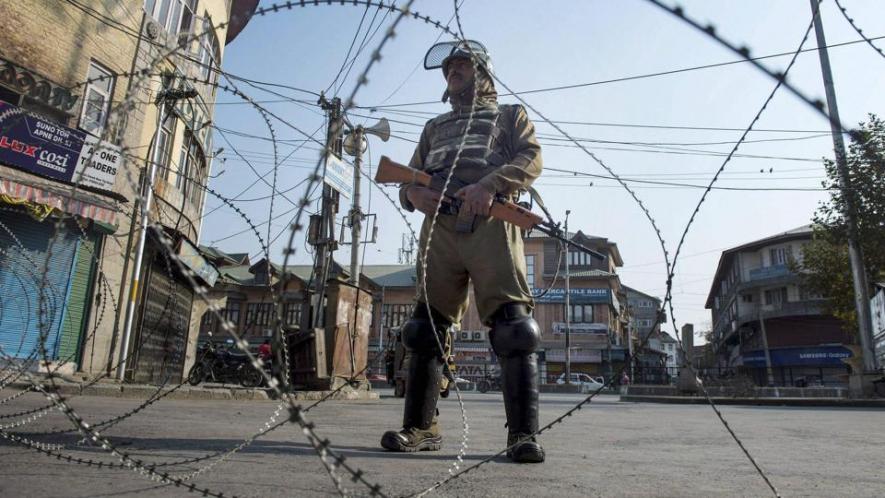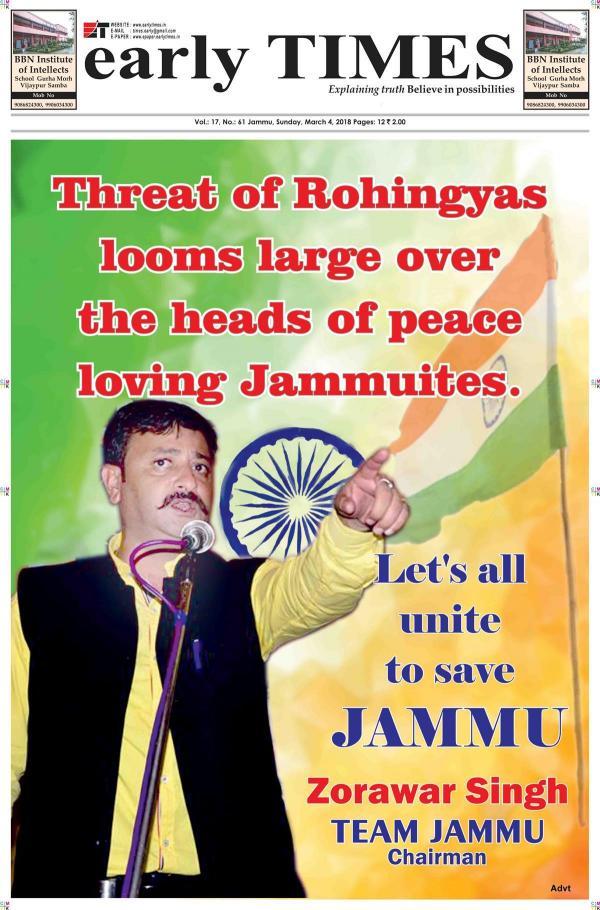BJP 2.0: An Indication of What Lies Ahead in J&K

Representational image. | Image courtesy: Hindustan Times
Ever since exit polls came out, people in the Kashmir valley have been too anxious about the prospects of Bharatiya Janata Party coming back to power. And now that the BJP has won, it seems that their worst fears are going to come true. Despite a myriad of issues plaguing the Indian population– unemployment, agrarian crisis – to name a few, Kashmir and Pakistan have remained the right wing party’s central agenda for campaigns across the country. In the last five years, the Indian Prime Minister’s constant shuttling between conspicuous silence and jingoistic speeches have changed narratives from the challenges facing the nation to nationalism and communalism.
For instance, the silence of PM Modi during the politicisation of rape case of the minor in Kathua, Jammu and the strong rhetoric during surgical strikes serve as one of the best examples. One must not forget how BJP banked on the credits for the Balakot episode when two nuclear countries – India and Pakistan—were at the brink of a war. With the Modi government in power, Kashmir has witnessed unprecedented oppression, muscular policy, rise in militancy, withdrawal from the electoral politics and increased tensions across the Line of Control (LOC). It is unlikely that BJP will change its policy towards Kashmir.
With Modi coming to power again, Kashmiris fear the worst.
BJP’s Sankalp Patra
Let's dig a little into the Sankalp Patra (manifesto) of BJP. The Sankalp Patra clearly mentions the abrogation of Article 35 A and 370, and they have repeatedly called for it ever since the times of Shyama Prasad Mukherjee. "We reiterate our position since the time of the Jan Sangh for the abrogation of Article 370," read the BJP's Sankalp Patra for Lok Sabha elections 2019. Article 370 grants special status to Jammu and Kashmir. After the walking out of the coalition with PDP, the right-wing party has, time and again, raked up the issue of revocation of Article 370. BJP’s stance against the constitutional provision had even brought state political parties together, who have unanimously asserted their will to protect the autonomy of the state. But this does not end here.
Also read: Contextualising Pulwama Attack and the Rise of New Kashmiri Militancy
Increased Polarisation
The discernible polarisation between Muslim-majority Kashmir and Hindu-majority Jammu cannot be discounted. The hitherto masked communal tensions had become visible after the rape and murder of a minor nomad girl, where a BJP leader Lal Singh was seen siding with the accused. The episode has widened the existing divide between Hindus and Muslims. Following this, a seminar focussing on the “Islamic invasion” of Jammu was also organised by a Hindu rightwing group.
The seminar which was organised to consolidate the Hindu votes of Jammu, saw the speakers emphasise on the increasing attempts for a demographic change of the Jammu region. The presence of Rohingya camps in Jammu were also shown to be symptomatic of the attempt to polarise the region. Even local newspapers like Early Times dedicated the first page of their newspapers to make people aware of how the presence of Rohingyas was a sign of danger.
Advertisements like “Threat of Rohingyas looms large over the heads of the peace loving Jammuites. Let’s all unite to save Jammu,” by Zorawar Singh of Team Jammu could be seen.

Image caption: The Early Times advertisement warning people against the threat of Rohingyas which appeared in the newspaper in March. Image credit: Scroll
The threats and intimidation of Kashmiris living in Jammu in the backdrop of the Pulwama attack belied all the arguments that the majoritarian Hindutva sentiment has not penetrated the region.
Also read: Has the Hindu Right Wing Succeeded in Spreading its “Polarisation” Agenda in Jammu?
Lawlessness in Kashmir
In his speeches, PM Modi has time and again claimed Kashmir to be an integral part of India, but in the same breath, has also restrained even the free movement of Kashmiris. The recent highway ban restricting the movement of civilian vehicles on Wednesday and Sundays to pave way for military vehicles is one such example.
The escalation in repression, for example with Operation All Out, is accompanied with more youth joining the militant ranks – 88 in 2016 to 164 in 2018. The previous Modi regime also witnessed unprecedented human rights violations, from a local Kashmiri man being tied to an army jeep to the 20-month old youngest pellet victim in Kashmir. All this has paved the way for more resentment amongst Kashmiris and now, they don’t hesitate to express it openly everywhere, even on social media platforms.
In view of the last five years, electoral success of BJP in India again will inevitably mean more suppression of rights of Kashmiris, thereby, further rescinding any possibility of a democratic solution.
Also read: Teenagers Joining Militancy is a New and Worrying Trend in Kashmir
“It seems too grim now. We have seen fascist principles were violently asserted by BJP in the most malevolent manner in Kashmir in the past five years. It was done because BJP tried to link fascism and jingoism increasingly to the idea of a republic. This naturally impinged on all the essential democratic and republican values all over India, but in Sangh Parivar’s project, there was no better fertile site to bring all this into full force than the troubled valley of Kashmir,” says Basharat Shameem, former English Professor at Kashmir University.
Get the latest reports & analysis with people's perspective on Protests, movements & deep analytical videos, discussions of the current affairs in your Telegram app. Subscribe to NewsClick's Telegram channel & get Real-Time updates on stories, as they get published on our website.























